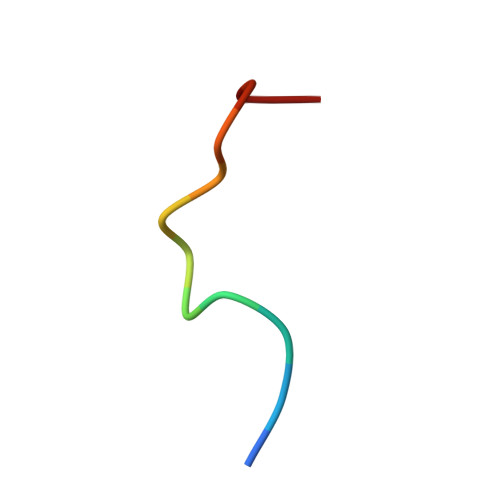Binding of an RNA aptamer and a partial peptide of a prion protein: crucial importance of water entropy in molecular recognition.
Hayashi, T., Oshima, H., Mashima, T., Nagata, T., Katahira, M., Kinoshita, M.(2014) Nucleic Acids Res 42: 6861-6875
- PubMed: 24803670
- DOI: https://doi.org/10.1093/nar/gku382
- Primary Citation of Related Structures:
2RU7 - PubMed Abstract:
It is a central issue to elucidate the new type of molecular recognition accompanied by a global structural change of a molecule upon binding to its targets. Here we investigate the driving force for the binding of R12 (a ribonucleic acid aptamer) and P16 (a partial peptide of a prion protein) during which P16 exhibits the global structural change. We calculate changes in thermodynamic quantities upon the R12-P16 binding using a statistical-mechanical approach combined with molecular models for water which is currently best suited to studies on hydration of biomolecules. The binding is driven by a water-entropy gain originating primarily from an increase in the total volume available to the translational displacement of water molecules in the system. The energy decrease due to the gain of R12-P16 attractive (van der Waals and electrostatic) interactions is almost canceled out by the energy increase related to the loss of R12-water and P16-water attractive interactions. We can explain the general experimental result that stacking of flat moieties, hydrogen bonding and molecular-shape and electrostatic complementarities are frequently observed in the complexes. It is argued that the water-entropy gain is largely influenced by the geometric characteristics (overall shapes, sizes and detailed polyatomic structures) of the biomolecules.
- Institute of Advanced Energy, Kyoto University, Uji, Kyoto 611-0011, Japan.
Organizational Affiliation:

















